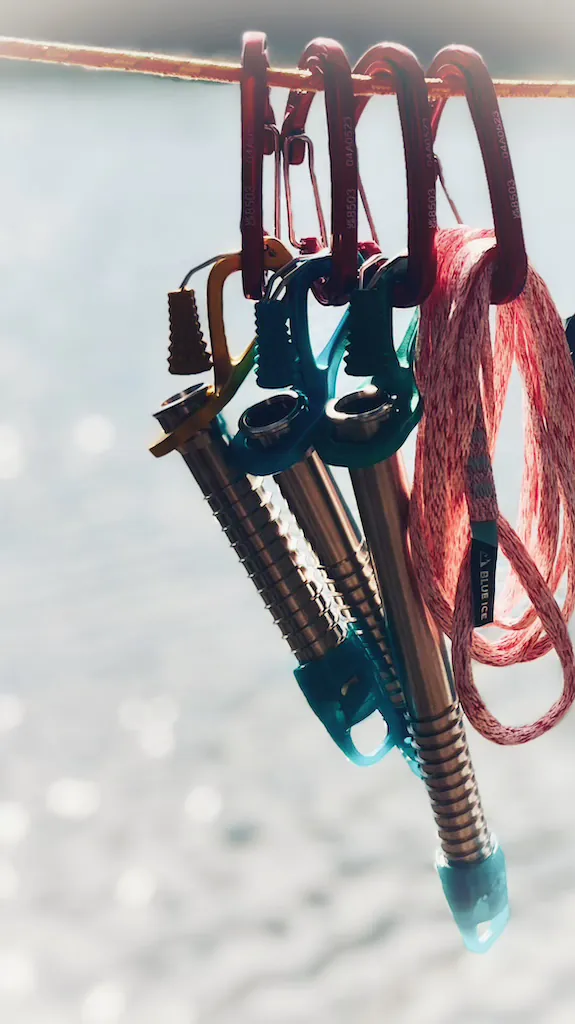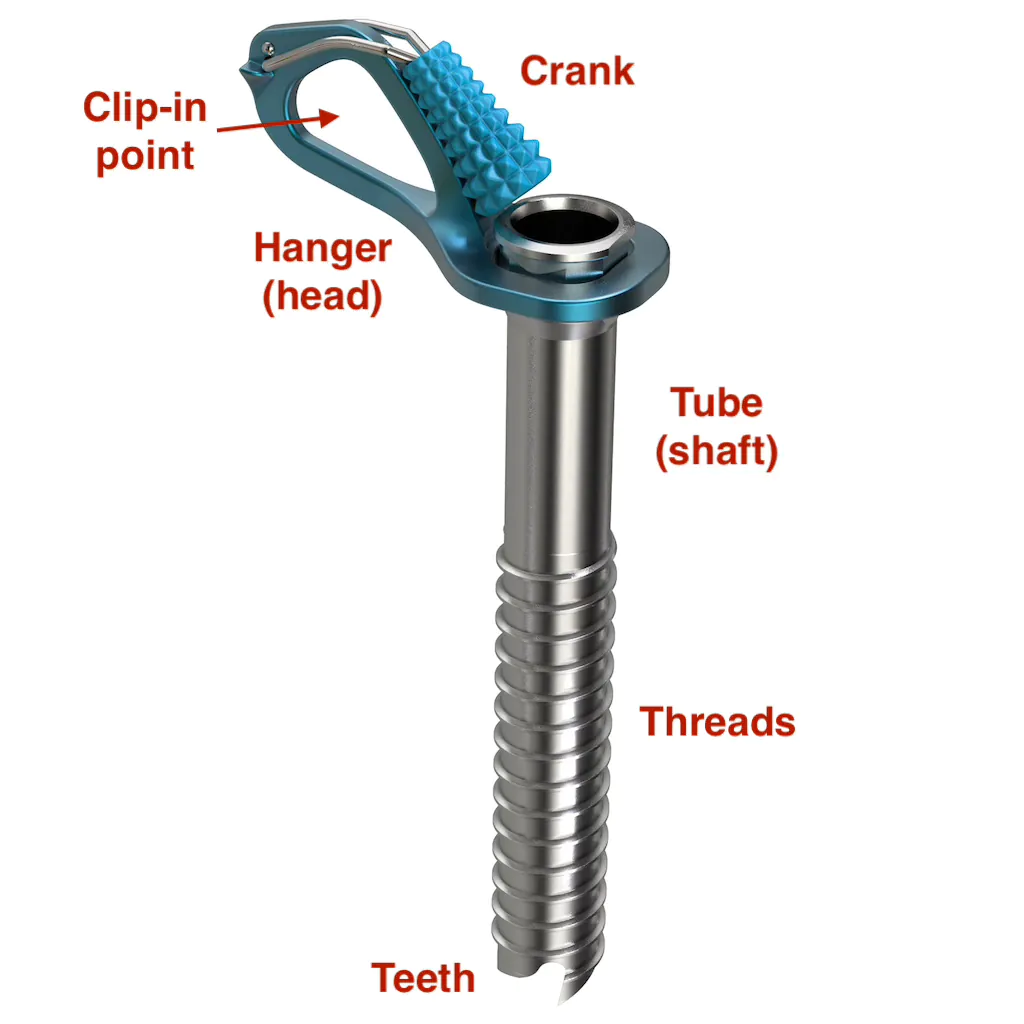Ice Screws
What is an ice screw?
Ice screw is a critical piece of protection used in ice climbing, alpine climbing, and glacier travel. It is a tubular, threaded metal device designed to be screwed into solid ice to create an anchor point for protection or belaying. Ice screws are essential for safety when ascending steep ice or crossing glaciated terrain. Ice screws differ by material composition and lengths:
Steel or aluminium - steel ice screws were considered to be stronger and more durable, yet the aluminium ones weight significantly less. Aluminium ice screws' tips are still made from steel, therefore with the advancement of technologies the strength arguments becomes less apparent.
Short Ice Screws (10–13 cm) – Ideal for thin ice or delicate placements where longer screws cannot be used.
Medium Ice Screws (16–17 cm) – The most versatile and widely used, offering a good balance between security and usability.
Long Ice Screws (19–22 cm) – Used for creating reliable anchors in softer ice or belay stations (Abalakov or Andersen threads).
An ice screw rack is usually made of 8x 13-17 cm screws, 2x short 10 cm and 2x longer 19-22 cm screws.

Ice Screw anatomy
- Teeth – Sharp, serrated edges at the tip designed to bite into the ice for easy placement.
- Tube (Shaft) – The main body of the screw, made of steel or aluminium, with helical threads to grip the ice securely.
- Threads – Spiral ridges along the shaft that provide holding power by cutting into the ice.
- Hanger (Head) – The top attachment point with an integrated clip-in hole for carabiners or quickdraws.
- Handle or Crank – A foldable or fixed lever that aids in quick and efficient screwing.
- Clip-in Point – The hole to attach protection, such as slings or carabiners, to secure yourself to the screw.

